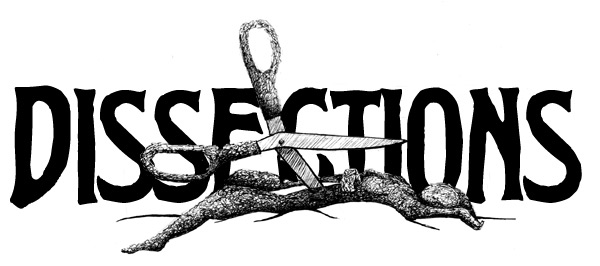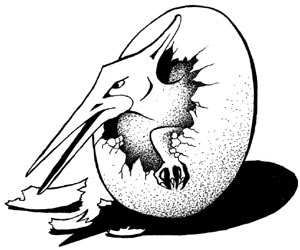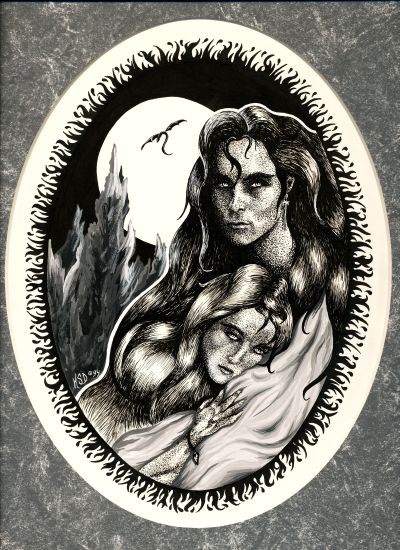[an error occurred while processing this directive]




Artwork: Communion by Kathy Davis Patterson
Suzy McKee Charnas
(ICFA conference, March 2009, Orlando, Florida)
Interviewed by Gina Wisker
Interviewer (I): Suzy McKee Charnas, thank you for agreeing to talk to me. First of all I wanted to ask you – why vampires?
Respondent (R): Why vampires? Well, I was a Stoker fan from the time I was 14, 15, I think. Dracula really made an impact, and then I went to all the movies and I got attached to the whole idea. Our mothers thought that there was a ‘Twilight’ phenomenon going on; it was just an exciting kind of story. And then it grew quiet after that, and I didn’t do anything about it for years and years, and then a whole set of factors came together for ‘The Vampire Tapestry’. With me it’s always the same – things come out of the real world and they hitch up together and all of a sudden there’s a story there. A couple of examples, the Faculty Club in which the story opens in the first chapter was modelled on the Faculty Club at Skidmore College where I had just given a talk about ‘Motherlines’, the sequel to ‘Walk to the End of the World’. And it felt like such a good setting, it just needed something to happen there. On the way in, on the plane, I’d been reading an article in Omni magazine about artificial blood being made in a university hospital somewhere, which never happened of course...but it was happening...and so I started thinking about university settings and vampires and the artificial blood idea and a bunch of other things. A lot of people in that book are actually modelled on people that I was teaching with, well teaching in my classroom at that time. All that stuff just suddenly came together and I had this armature for a story in an idea from a book by Loren Eisley, a naturalist and poet, who died in 1980, who’d written a lot about being a palaeontologist. I’m not sure if this essay work was about looking for the past. That got me thinking about a vampire, someone who was really, really, really, really old...maybe not even human to begin with, that old. Not somebody who was a product of the whole religious thing about vampires, you know, you’re bad, you make a deal with the devil and then you kill yourself and then you’re a vampire, or you get bitten by something....
I: Or a bad luck turn....
R: Or a bad luck turn, and they forget to bury you at the crossroads or something like that (laughs). And there you are undead with fangs. I wanted to get around all that crap and just step out of it. In fact the whole ‘Here I am a vampire, with the human background which makes me sentimental, and at the same time I have this horrible bestial urge to drink your blood’ – I find that boring. I thought, ‘Well, what if he’s always been kind of bestial and looks just like us, and masquerades as us, and has to keep adapting himself to fit in with what we do and what we make of ourselves.’
I: When you use fantastic creatures like vampires – or elsewhere with stories that I teach through werewolf stories, are you engaging with social issues, cultural issues? Or are you ‘merely’ – I can’t think of another word – entertaining and using your imagination? What are you doing there?
R: You can’t help but engage. Even people who think they’re only entertaining are engaging social issues, which inevitably happens when you’re writing about anything remotely connected with what’s around us. There’s no way not to write about that, to the reader who sees what you put on the page and can see through that to all the issues that you’re bringing up in your story. So yes, sure, I’m particularly interested in the ways in which we prey upon each other as social beings. And economically, it’s true. In contrast, this is much more simple, straight through, predation by somebody who just wants a sip of your life, thank you very much. And he uses all of our tropes of exploitation to be able to get to his prey, not because they’re needed by him but because he can use them. Like the professor exploiting his graduate assistant...the perfect set up. So many people have been through that one....
I: I mean, he might live in Cambridge.
R: Ahh, there have been people who said to me, ‘That guy sat on my thesis committee.’ Because everybody knows that guy.
I: Yes. And that it’s in an academic context; that’s really interesting.
R: Yes, because I thought, ‘Well, what are you going to do with yourself over three or four thousand years of hanging out with us?’ Well, you’ve got to come up with some games to keep yourself from going crazy. And study is a really good game. It’s endless.
I: Yes. And you always look old, or you’re always hanging about.
R: Yeah...and people expect that.
I: Have you got a vampire in a library?
R: I put one in my library. (Laughs). Looking in the stacks, can you imagine? Which you can’t go into any more. But that was part of that story, that last chapter opens with him hunting....
I: In a library, because you could live there forever.
R: Well, you could hang out there, and you could find lots of fresh young blood, fast asleep.
I: And not know why it was so tired when it woke up.
R: That’s right, because you’re supposed to be tired, and you’ve been partying and you don’t question tiredness.
I: And a bit anaemic.
R: Yeah, and study always puts you to sleep anyway. So that’s perfect, it’s perfect.
I: OK.
R: So, yes, the social issues are always involved.
I: So we’re laughing at predation here, aren’t we? But the social issues about that predation between older and younger...and you’re transferring them into a fantasy context.
R: I’m just trying my best for them. I’m just showing how they can be exploited by someone who’s clever. These methods that we have of getting what we need from each other are so easily adapted to predation. It’s a lot more direct than what we expect to see among ourselves. We don’t actually kill each other or eat each other – but he does, and it’s very easy to do because we’ve created all these channels of exploitation and predation against each other.
I: Which are normal.
R: Which are normal, and are part of our social structure. You can just use those because he’s very smart.
I: Let’s see which way we’re going with this. Are you entertained by doing that, and you’re using a human context to do it? Are you making a comment about the human activity of predation through it?
R: I hope so. To the reader who’s interested in that, sure. To the reader who’s not interested, of course not.
I: No, you’re entertaining that reader.
R: Yeah, it depends on what the reader brings and the reader is a funny creature. The book is a machine that only works if you give it away; it has to go out from you. Then other people decide what levels of participation they’re going to bring to it. You cannot dictate what level they’ll bring to the piece of layered work.
I: So they might totally misunderstand?
R: Oh yeah, it’s happened! (Laughs.)
I: And then they write to you?
R: Yeah. It certainly happens all the time. Not just with me but with lots of people. Because it’s a very accessible machine at the top level, and for some people that’s all they want.
I: Being at the surface?
R: Yes, surface level, whatever it may be. All writing does have subtext, of course, all fiction, but some stories are shallower than others. With some it’s just down below. And you have to supply the lower levels yourself. With something like, say, ‘Twilight’, for example, which I find extremely shallow – some readers find that just the right depth for them.
I: Yes, it’s obvious. And they’re going, ‘Good, great. You realise this and....’
R: If I want to I can work deeper into other layers and connections. But that’s me bringing all that to the story.
I: And you know that.
R: Yeah. I suspect those deeper meanings were not in the mind of the author. Well, I could be wrong.
I: They might be, but they’ve watered it down for the audience.
R: Yeah, maybe it just got too deep. Or she wasn’t really interested in that, or she knew her readers wouldn’t be interested in going there. Authors have different ways of dealing with the fact that you can go as deep as you want, but you don’t always want to dive down deep.
I: No, because it would miss the audience.
R: Yeah, because it would miss the audience. Or you may not want to go down there, personally.
I: Yes, too close. Let’s talk a bit about the writing process, because you’re getting there at the moment aren’t you?: thinking about levels, shallownesses, audience response, reader response. When you’re writing do you ever have that experience – when you’ve gone so far, you kind of know where it might go but you can’t actually get it to go there. Do you have any sort of stalling moments?
R: Yeah, I do. They’re always the same. It’s whenever I try to make a character do something that’s not right for the story. It isn’t that they’re conscious, it isn’t that they know what they’re doing, and they tell me what they’re doing – that’s nonsense to me. But it is that once the character has a certain amount of shape and depth – depth again – there’s a trajectory that’s right for that character. And it is not determined but it definitely shuts out certain possibilities. And if you start to turn them into alleys that they’re not meant to go down – if I do that anyway – everything drops dead, it soon goes dead.
I: It doesn’t read right.
R: It doesn’t work. And I can’t fix it. I bang my head against a wall for quite a few weeks and then I say, ‘Oh, I’ve been here before, I know what this is. Shut up, let them talk, see what they’re doing and what they need to do.’ And then let them do it, get out of the way.
I: So, what is that, what happens?
R: When they’re getting in the way of the story, the story has its own, not hold, exactly, it’s not a life force and it’s not a determined design.
I: It sounds like a momentum and a trajectory.
R: Yes, and I think it’s structures that you have in your head for the story that you don’t know about, your mind is running ahead of your consciousness. And so it has already figured out where this thing’s going and how you’re going to catch up. And you have something more obvious or more tricksy or cute or whatever in mind – that you prefer to do with that story. Well, the story wants to go where it wants to go.
I: How do you nudge yourself into getting that out?
R: I listen to the characters. I sit down and I write dialogue and I just listen until they come up with enough to tell me which direction is the right direction.
I: And they’re already in character to do that?
R: Oh yes – characters talk together, which is the different parts of my mind discussing whatever the next move is or the matter of the story, whatever it is, until some action goes out of that and then I can see where I’m supposed to be going.
I: The piece of work that you’re working on at the moment, that’s one shape, isn’t it? Rather like the shape that we were talking about, something that is small that you think should be big. And the piece that you were reading from yesterday, you read two bits from it.
R: Yeah, it’s got about five or six leaders, different characters. And I have no idea how many of those characters will survive – how many will stay in the book, or that will retain the size and shape and importance that they have now. They all have pretty much equal importance right now. They’re all going to be heading for the same central knot of story from different places. And I just have to follow along, so I just jump from one to another.
I: This sounds really intuitive.
R: I’m not an outliner, I’m not a bridge builder, I am more of an organic gardener – that’s why I’m so slow. You can build stories, if you design things. You make a blueprint, and then follow the plans. You can make a terrific start very fast. It may not be very good, but it will be a good start. Outlining – there are people who can do that, I’m not one of them. I start with a bunch of seeds and I water everything and see what grows and do a little pruning when the time comes.
I: And see what turns out.
R: And see what turns out. It doesn’t say anything on the packet.
I: That’s really, really interesting.
R: It’s the only way I can work, so that’s what I do. Although sometimes the seed is an idea, rather than a person.
I: But you’ll throw that out and then....
R: I’ll throw that out and then people will start popping up.
I: And populate it. So it’s the characters really. Is there anything else to do – other writers talk about going for a walk, listening to music, watching the TV, other things that nudge you.
R: Movies, actually – just because there is so much image involved – pictorial images work for me – I can’t do it the other way. I’m not a movie kind of person in terms of writing screenplay, I can’t see action before it’s in front of my eyes. I do it much more on an auditory basis. When I’m writing. I’m working off of sound more than visual stimuli. Then I have to stage scenes in my mind as if on a theatrical stage. It doesn’t just happen in front of my eyes. So when I go to the movies I will see a frame of something happening, and that will be suggestive to me. And that can help to kick loose my imagination.
I: Even if it’s about something totally different?
R: Oh yes, especially if it’s about something totally different. I think we all have different sensory stimuli that we can use to free up our creativity. Some people take a hot bath and drink some wine and wait for inspiration.
I: Well that’s their way. And others do something totally different, like climb a mountain.
R: Yes, something that’s different from what you’re doing.
I: Do you do any of those sorts of things or is it mostly movies?
R: I go to the gym a lot. I do that regularly, though, so that’s not something done especially to spur up creativity. I used to listen to books on tape in the gym. Then I couldn’t get tapes any more, they were all discs. I don’t have a disc player – and hell, so I stopped (laughs).
I: So you could do that.
R: So I could do that, and that’s also a good way to get my mind off what I’m writing and take a little vacation. It can be refreshing, to be not working on something.
I: What are you going to do next then?
R: You mean this thing that I’m working on right now, which is a fantasy novel – I think, with shamanistic magic – and a political situation on a large scale. And people just dealing with a big political change that happens. How that comes out I’m not sure. I’m pretty sure that this is a way of organising and then expressing whatever insights you get when you’re finishing your active life and moving into the more contemplative later life – I’m 69 years old – yes! – I’ll be 70 in October. So my viewpoints on many things have changed, and I think that this book will present in a fictional way some of those changes, maybe a lot of them, I’m not sure. That’s why a lot of it I can’t tell you about yet, ’cos I don’t know.
I: Because it’s changing as you’re changing?
R: Well, it’s things that I’m discovering as I go along. These are insights.
I: It sounded multiple story saga type stuff, because you go in two bits. The first bit where she’s pulling off her hands and her feet – that seems extremely finished to me.
R: Yeah, well that’s a little legend kind of thing. It’s just part of the set-up of what happens later – many, many hundreds of years later – which is the story I’m working on. Yeah, there are five or six major streams of perception through different characters. Maybe I’ll have an animal one – I don’t know yet. Shaman is another one – we’ll see.
I: OK, well, we’ll wait and see. Thank you very much.
R: You’re very welcome.